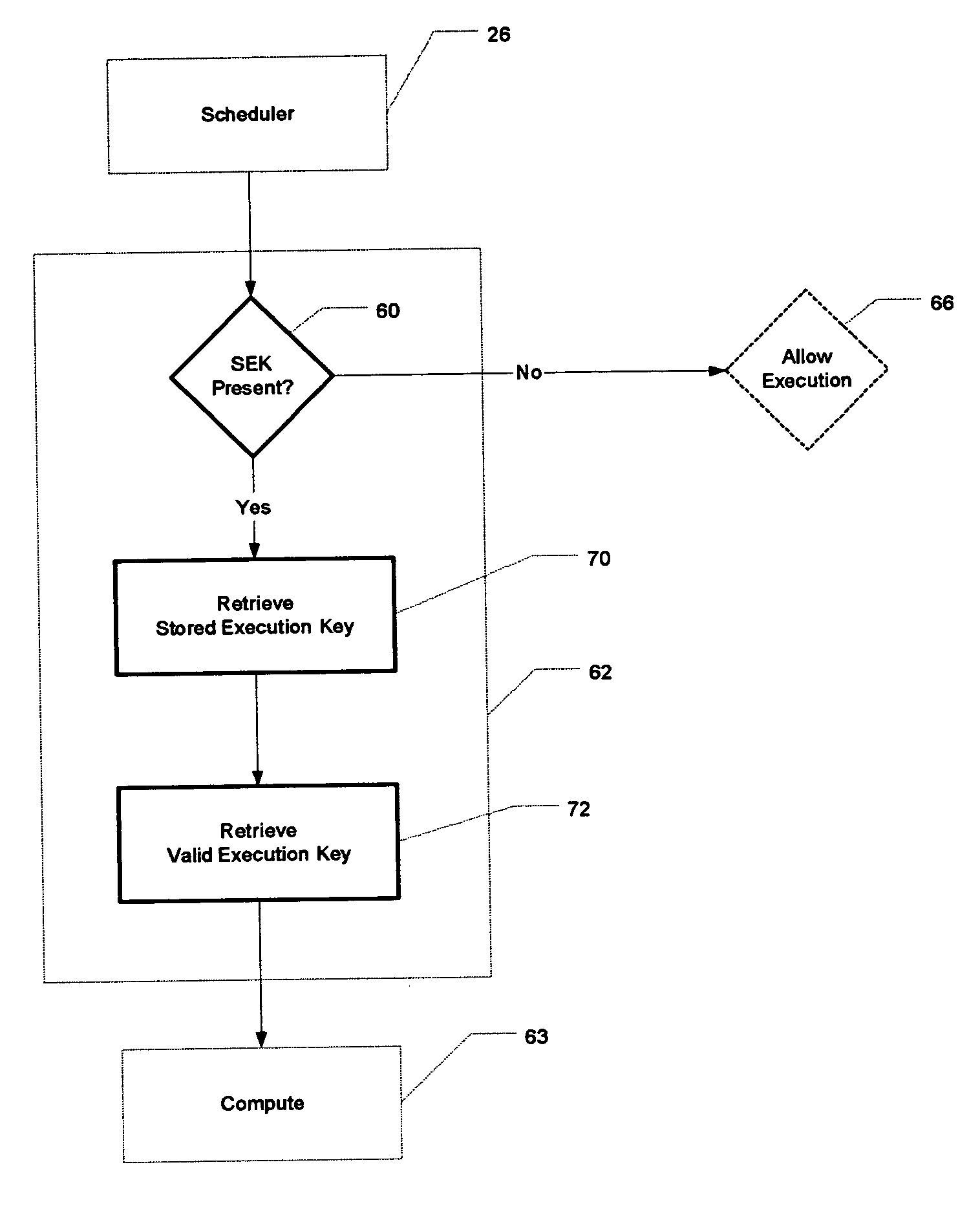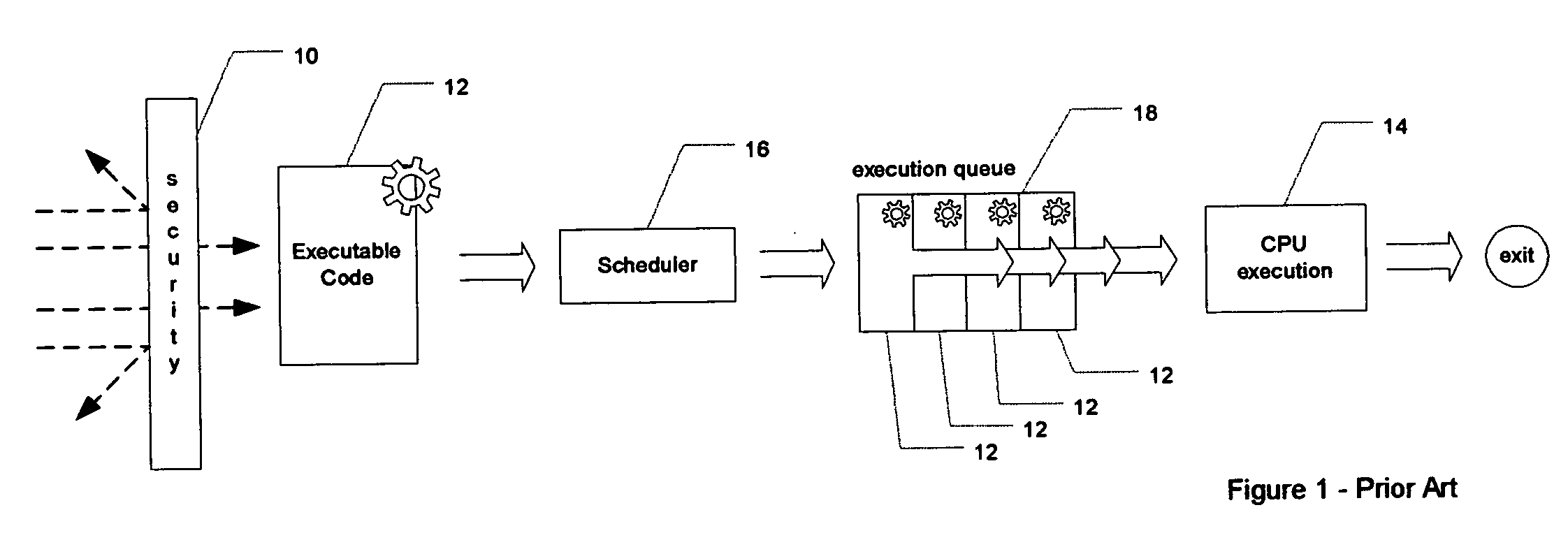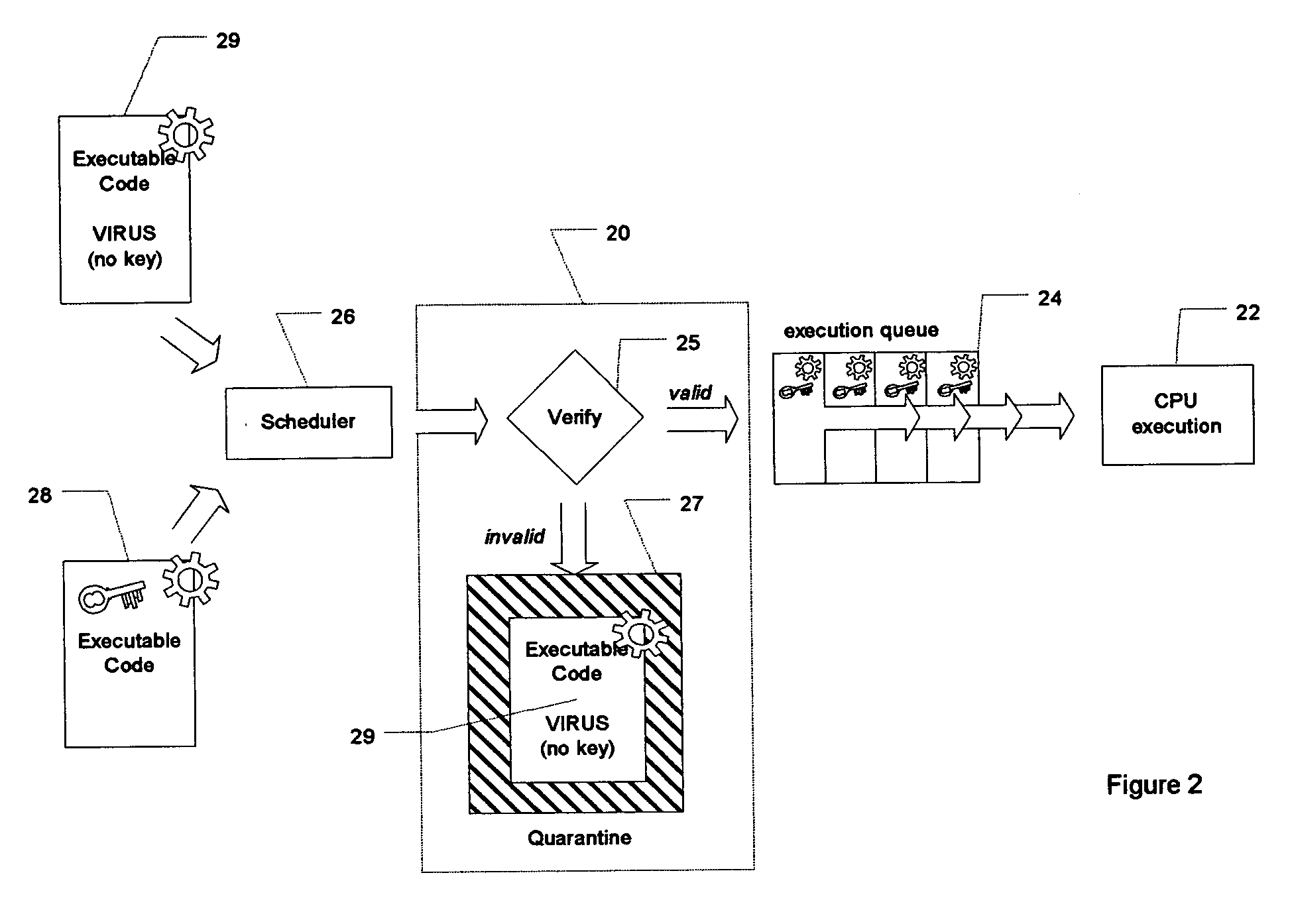Pre-emptive anti-virus protection of computing systems
a technology for computing systems and anti-viruses, applied in the field of computer security, can solve the problems of system infected, system not being able to leverage and exploit the inherent sameness of mass-distributed software, and computer security being pre-emptive rather than reactive, so as to reduce economic harm, prevent infection, and deter the effect of spreading
- Summary
- Abstract
- Description
- Claims
- Application Information
AI Technical Summary
Benefits of technology
Problems solved by technology
Method used
Image
Examples
Embodiment Construction
[0078] With reference to FIG. 1, other than the commonly used security barriers 10, such as firewalls, conventional operating systems provide all executable code 12 (denoted by the gear icon superimposed on a rectangular block) with open access to computing resources (such as the CPU) 14 within a computer system. Any executable code 12, whether an application software module or a part of the operating system, can request the use of system computing resources 14. System computing resources include one or more of the CPU, system memory, and system I / O subsystems, such as internal buses, I / O cards and storage media.
[0079] Typically, for example, executable code 12 is presented to a scheduler 16, which arranges access to an execution queue 18. The execution queue 18 then sequentially provides the executable code 12 to the CPU 14 for execution. Thus, in conventional computer systems, there is no challenge to, or validation of, the origin or nature of the queued executable code. The work...
PUM
 Login to View More
Login to View More Abstract
Description
Claims
Application Information
 Login to View More
Login to View More - R&D
- Intellectual Property
- Life Sciences
- Materials
- Tech Scout
- Unparalleled Data Quality
- Higher Quality Content
- 60% Fewer Hallucinations
Browse by: Latest US Patents, China's latest patents, Technical Efficacy Thesaurus, Application Domain, Technology Topic, Popular Technical Reports.
© 2025 PatSnap. All rights reserved.Legal|Privacy policy|Modern Slavery Act Transparency Statement|Sitemap|About US| Contact US: help@patsnap.com



